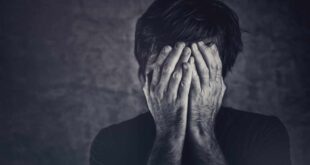There are distinct degrees of severity in mental disorders, but the traditional distinction between neurosis and psychosis is today a controversial issue. Pinsker and Spitzer (1977) reported that, in DSM-III, psychoses and neuroses are not used as principles of classification.
According to Pinsker and Spitzer, the term psychotic is used as an adjective to describe certain aspects of severity of illness. Neurosis is referred to as a speculative etiologic concept. Probably, the concept of psychoses as a group of conditions was rooted in mental hospitals at a time when no one was identified as a mentally ill person unless psychotic.
But if the term psychotic describes a certain degree of impairment of reality testing, disruption of thinking process, disorganization of behavior, or inability to function, the disorder (or disorders) which causes the psychotic impairment must have been present in mild form before the psychotic level of impairment was reached.
Thus, I am using the terms neurosis and psychosis as levels of mental disorders, and as a link between the various degrees of endogenous depression, viewed as a nosological entity, on a continuum of neurotic symptoms (hysterias, etc.) through hysteroid character neuroses, latent psychosis, and full-blown psychotic depression.
The moods of elation and depression are reflections of shifts in the balance of libidinal cathexes from self-love to object love, from self-hate to object hate, from love to hate, and vice versa.
In my nosological system, hysteria and conversions belong to the class of neuroses. They are clusters of symptoms of the basic dysmutual-depressive pathology, to be described later on.
When these symptoms become fortified by rigid defense mechanisms, such as rationalization and denial, the neurosis turns into character neurosis.
When the defenses prove to be inadequate, and the individual faces psychotic breakdown, but somehow desperately holds on to whatever was left from the defenses, it is latent depressive psychosis. When the defenses fail, a manifest depressive psychosis develops.
I avoid the terms unipolar and bipolar, because every manifest psychotic depression can develop depressive and manic symptoms. I also avoid the term manic-depressive psychosis, for there are five possible clusters of symptoms in manifest psychotic depression, to be described later on.
 Therapy for anxiety Therapy for anxiety
Therapy for anxiety Therapy for anxiety



